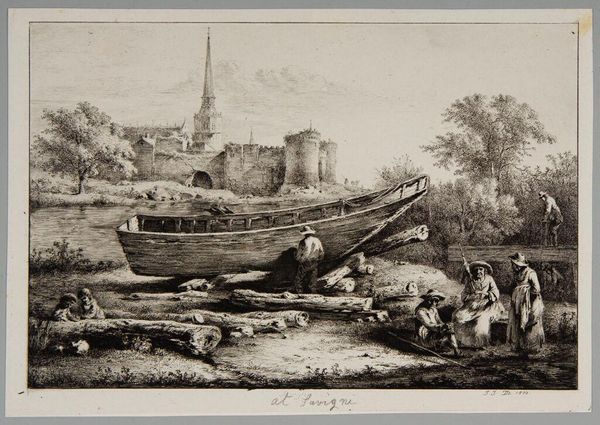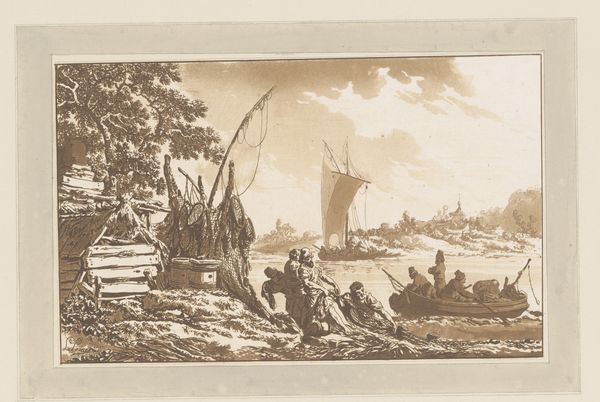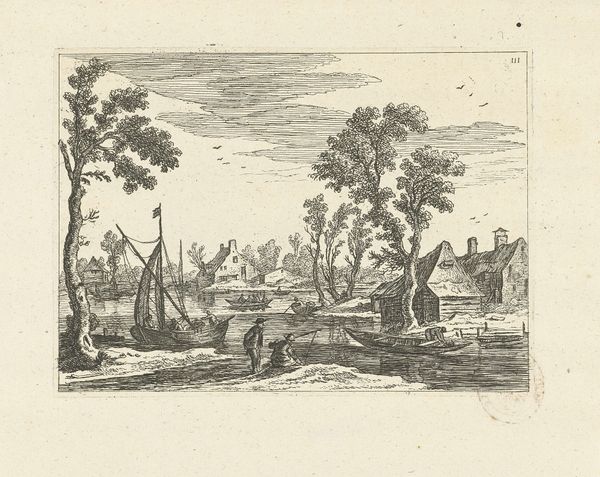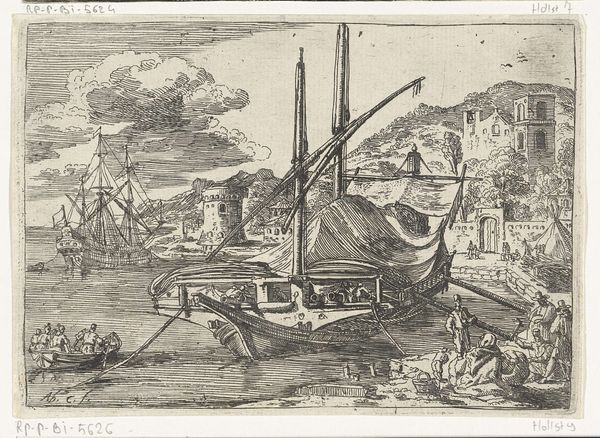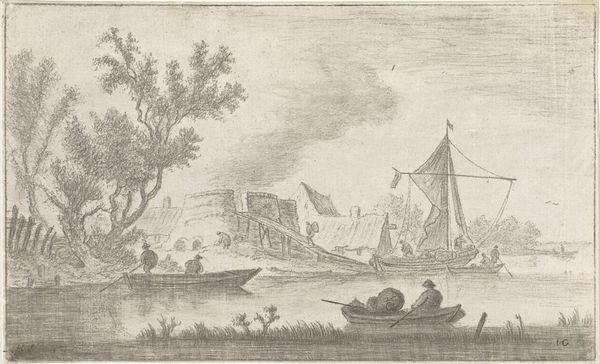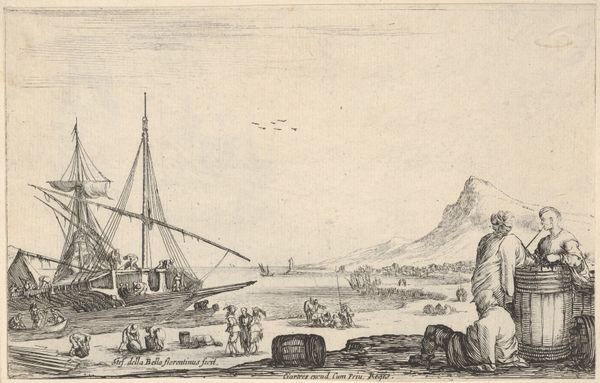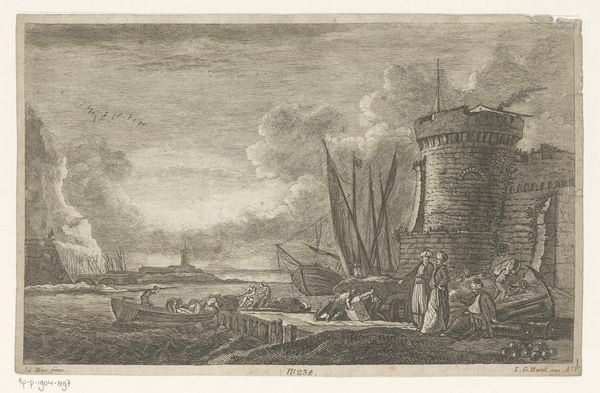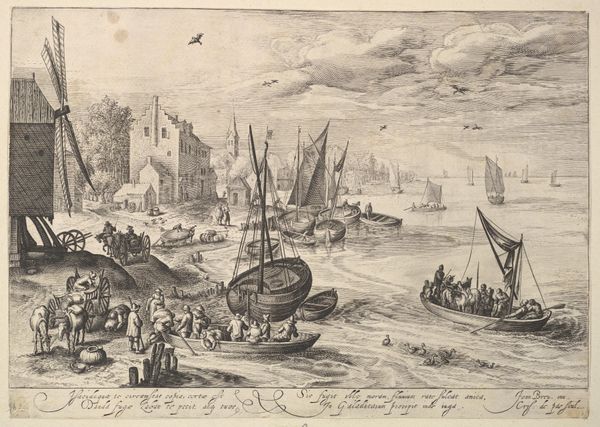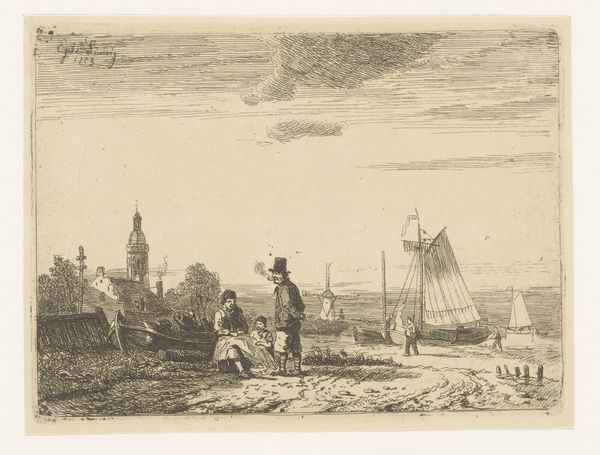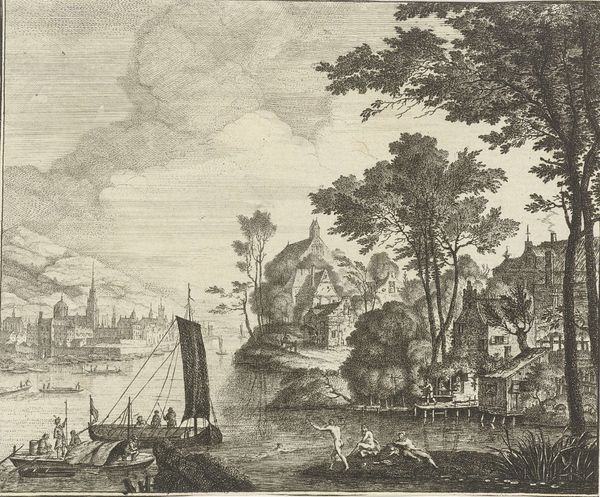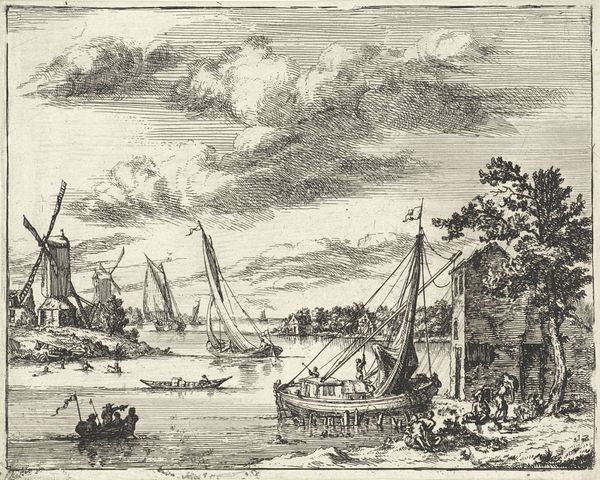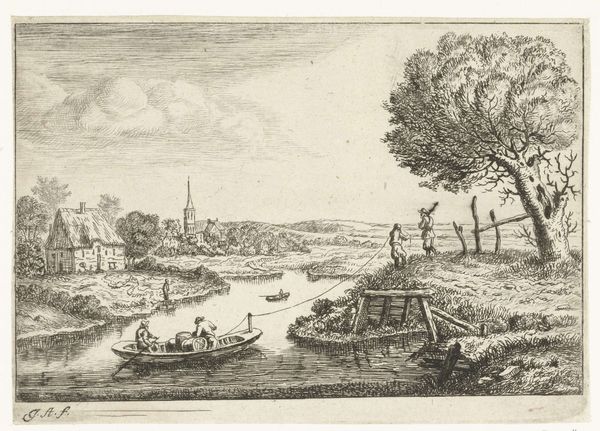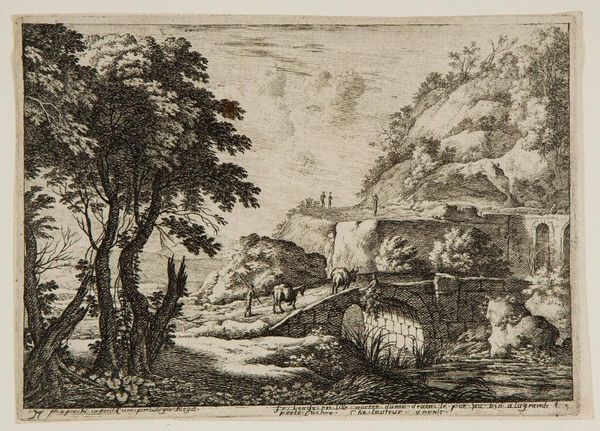
drawing, print, etching
#
drawing
# print
#
etching
#
landscape
#
romanticism
#
cityscape
#
genre-painting
Dimensions: Sheet: 7 1/4 x 10 1/2 in. (18.4 x 26.6 cm)
Copyright: Public Domain
Curator: Immediately, I'm struck by the sheer quietude of the scene. It's a bustling construction site rendered as a pastoral moment. Editor: That’s an interesting observation! We're looking at Jean Jacques de Boissieu's "The Construction Site, in Savigny," an etching and print from 1803, currently housed in the Metropolitan Museum of Art. It’s a prime example of Romanticism's interest in both landscape and the everyday lives of the working class. Curator: Yes, but there’s more to it than a simple depiction. Look at how the boat, a central image, is juxtaposed against the architecture in the background. The steeple rising up points to aspirations but the dilapidated fortress symbolizes repression. What historical power dynamics do you imagine this scene reflects? Editor: The architectural elements certainly add layers of symbolism. Cathedrals signify more than religion, often alluding to complex civic hierarchies, whilst castles call forth collective memory related to historical military oppressions. Considering that this piece emerged just after the French Revolution, it's worth exploring if Boissieu was drawing attention to how the lives of these working-class citizens are governed by existing powers of State? The subjects depicted within the scene could then serve to subtly question societal order. Curator: Absolutely! It portrays the workers in Savigny in this interesting light, simultaneously highlighting labor but, indeed, inviting the question: whose labor, and to what end? Also, think about how Romanticism—as a movement—often idealizes nature, but here, the “nature” includes human alterations and interventions. Editor: Visually, it also directs my focus on continuity of life across eras, that this site has been active through several ages. Beyond revolutionary ideals, consider that boats can often symbolize journeys, especially in terms of emotional and spiritual change. Curator: Exactly! And these subtle layers provide viewers multiple readings and possibilities. De Boissieu pushes beyond mere representational art. Editor: This pushes our viewing beyond documentary to deeper meaning that allows connection through eras, people, and values in constant change. Curator: It all calls to attention to the ways power continues, overtly or subtly. This reminds us that representations—landscapes, cityscapes, even simple boats—carry narratives we need to actively interrogate. Editor: Ultimately, these images prompt self reflection about what shapes us. De Boissieu certainly captured so much to ponder!
Comments
No comments
Be the first to comment and join the conversation on the ultimate creative platform.
